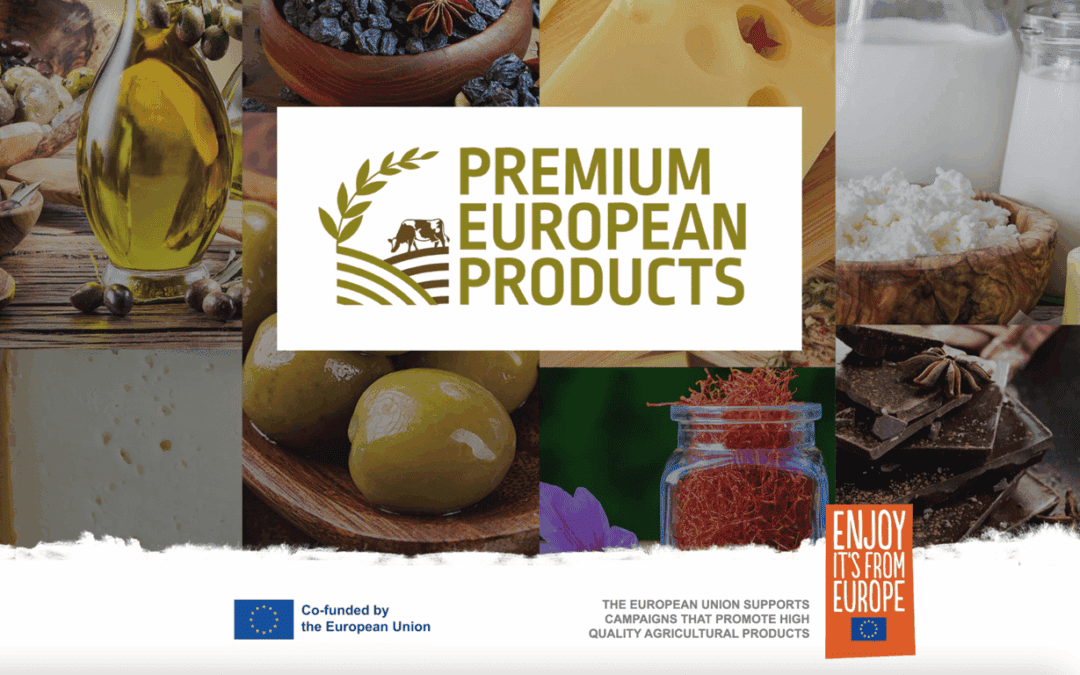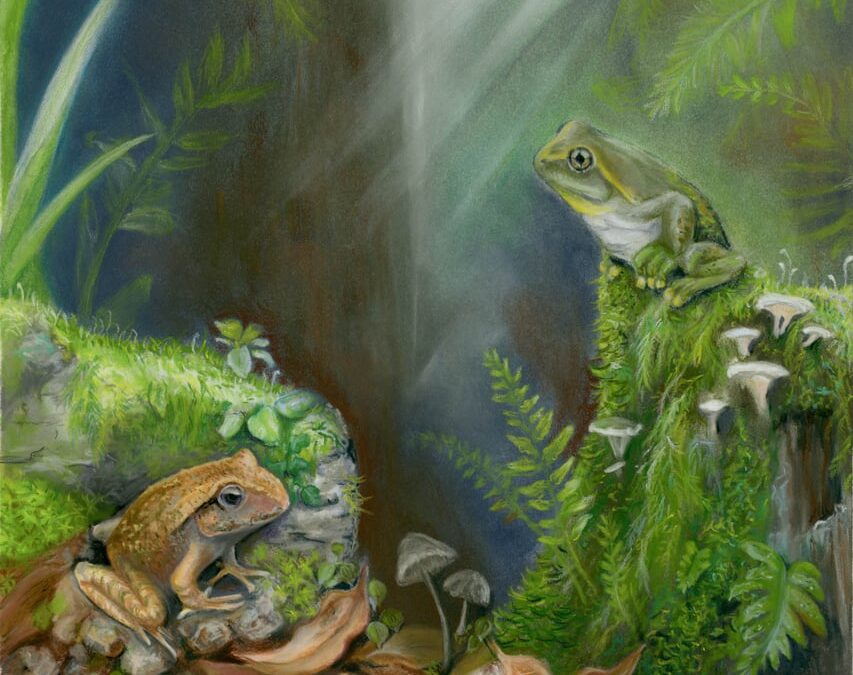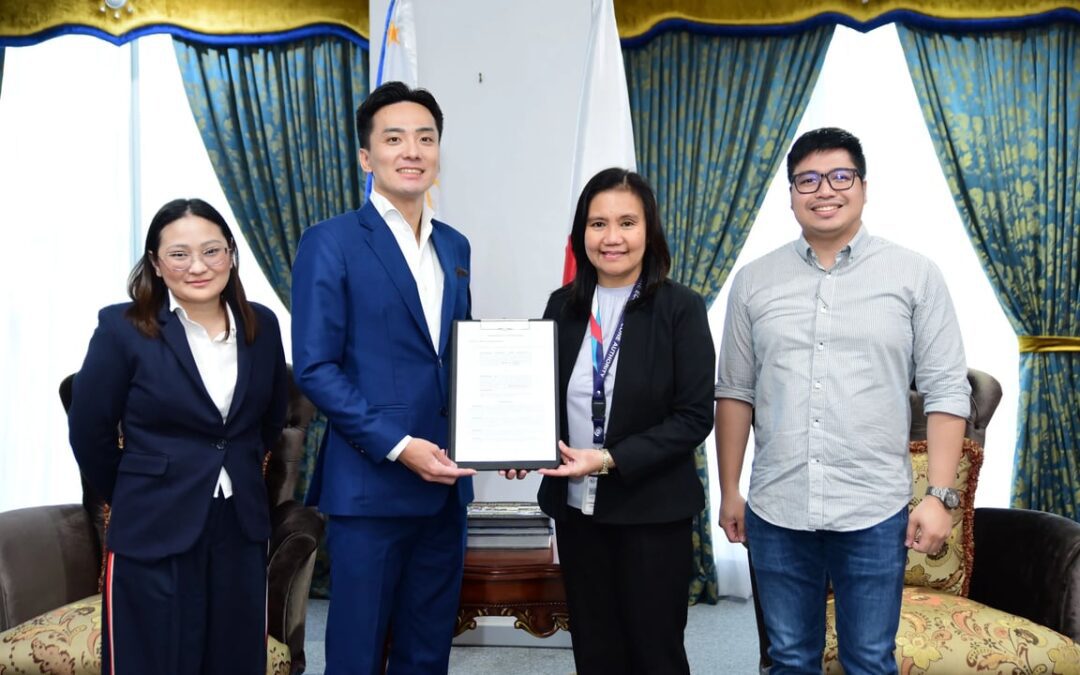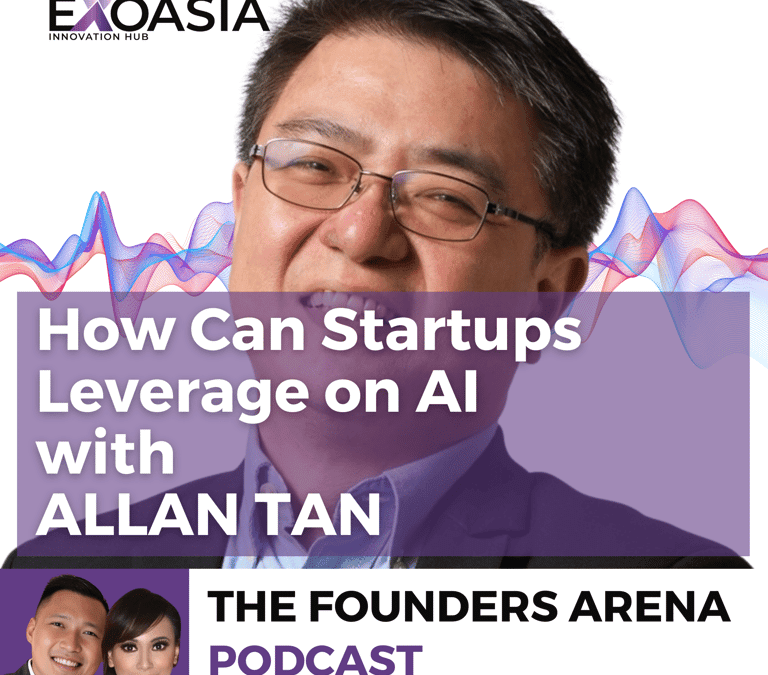
by | May 19, 2025 | Business
Kuala Lumpur, Malaysia [13 Mei 2025, Selasa] – Untuk Siaran Segera
Kesatuan Koperasi Pertanian Kebangsaan Greece (ETHEAS) dan Jawatankuasa Tenusu Latvia (LDC) dengan bangganya meneruskan program “Penyediaan Maklumat dan Promosi Produk Pertanian di Kanada, Malaysia, dan Korea Selatan” yang berlangsung dari 1 Januari 2024 hingga 31 Disember 2026. Dibiayai oleh Kesatuan Eropah, program ini mempromosikan produk pertanian Eropah berkualiti tinggi di Korea Selatan, Malaysia dan Kanada melalui kempen “Produk Eropah Premium”.
Kempen ini mencerminkan komitmen Kesatuan Eropah terhadap keselamatan, kualiti, dan kebajikan haiwan. Peraturan EU dipercayai di seluruh dunia kerana protokol keselamatan yang menyeluruh, termasuk kawalan teliti penggunaan racun perosak dan piawaian kebersihan yang tinggi di fasiliti pemprosesan, yang memastikan produk premium berkualiti terbaik. Kempen ini memiliki empat objektif utama: meningkatkan kesedaran tentang produk Eropah berkualiti tinggi, mempertingkatkan pengiktirafan pengguna, meningkatkan penggunaan, dan meningkatkan eksport.
Kejayaan Produk Eropah Premium di SIAL Kanada
Bagi memulakan program ini, Produk Eropah Premium telah mencatat kejayaan besar di SIAL Kanada 2025, yang berlangsung di Toronto dari 29 April hingga 1 Mei 2025. Di Booth 1017.3, pengunjung dapat menemui pelbagai produk premium terpilih yang mewakili yang terbaik dari pertanian Greece dan Latvia.
Kempen Produk Eropah Premium mempromosikan lima kategori produk. Kategori pertama memaparkan 11 produk bertauliah PDO dari Greece, termasuk minyak zaitun, buah zaitun, anggur kering, safron, keju keras, serta gam mastik dan minyak gam. Empat kategori selebihnya menonjolkan produk Latvia: produk tenusu, buah-buahan bergula, coklat dan konfeksi, serta snek masin. Kerjasama di SIAL Kanada ini menggambarkan permintaan antarabangsa yang semakin meningkat untuk produk makanan asli dan boleh dikesan, menghubungkan kecemerlangan pertanian Eropah dengan pengguna di seluruh dunia.

Komitmen kepada Kualiti dan Kelestarian
Kempen Produk Eropah Premium mengukuhkan standard terjamin Kesatuan Eropah dalam pengeluaran makanan, memastikan setiap produk memenuhi kriteria terperinci untuk keselamatan, kelestarian, dan keaslian. Dari kaedah pertanian tradisional Greece hingga proses fermentasi tenusu semula jadi Latvia, standard ini menjamin profil rasa yang unik dan manfaat pemakanan.
Jenama kempen yang mudah dikenali, yang terinspirasi dari landskap semula jadi dan warisan pertanian Eropah, mengingatkan pengguna tentang tradisi yang berakar umbi di sebalik setiap produk.
Mengembangkan Jangkauan Global
Selepas SIAL Kanada, ETHEAS dan LDC akan meneruskan perjalanan promosi mereka di Seoul Food & Hotel (SFH) di Korea Selatan dari 10-13 Jun 2025, dan Food & Hotel Malaysia (FHM) dari 23-26 September 2025 di Pusat Konvensyen Kuala Lumpur. Acara ini akan menampilkan sesi tasting khusus yang menyerlahkan kualiti unik produk Greece dan Latvia.
Melalui platform antarabangsa utama ini, kempen tersebut mengukuhkan kehadiran pertanian Eropah di Asia dan Amerika Utara, membina hubungan jangka panjang dengan pengimport, pengedar, dan peruncit sambil menunjukkan ciri-ciri kualiti, keselamatan, dan kelestarian tersendiri yang menjadikan produk Eropah ini pilihan premium untuk pengguna di seluruh dunia.
Kempen Produk Eropah Premium di Malaysia
Selepas Food Hotel Malaysia, kempen Produk Eropah Premium akan memperluaskan inisiatifnya di Malaysia dengan mengadakan program mesyuarat B2B yang komprehensif, menghubungkan pengeluar Greece dan Latvia secara langsung dengan profesional perdagangan utama Malaysia melalui sesi business matching yang telah diatur. Pertemuan ini akan membolehkan interaksi peribadi dengan pembeli bertaraf tinggi yang berminat khusus dengan produk makanan premium Eropah.
Selain program B2B, rancangan strategik yang mensasarkan pengguna dalam penerbitan industri makanan terkemuka Malaysia dan platform digital akan melengkapi kehadiran fizikal, menonjolkan standard luar biasa, kaedah pengeluaran lestari, dan rasa autentik yang membezakan produk Eropah di pasaran makanan Malaysia yang pelbagai.
Kempen Produk Eropah Premium mengalu-alukan profesional industri untuk menemui kualiti, keaslian, dan kepelbagaian tawaran Eropah dari Greece dan Latvia. Kami menjemput pengimport, pengedar, peruncit, dan pemimpin perkhidmatan makanan untuk berhubung dengan pengeluar yang dipercayai dan meneroka kerjasama berpotensi yang menyokong pertumbuhan jangka panjang dan nilai dalam pasaran Malaysia.
Untuk maklumat lanjut mengenai kempen “Produk Eropah Premium”, sila layari https://premiumeuropeanproducts.eu/ atau emel kepada kami di in**@*********************ts.eu.
Laman yang didedikasikan untuk program ini boleh didapati di Instagram, Facebook dan YouTube, @premiumeuropeanproducts.
Nota kepada Editor
Mengenai Kesatuan Koperasi Pertanian Kebangsaan Greece (ETHEAS)
Ditubuhkan oleh koperasi terkemuka Greece dan disahkan oleh undang-undang Greece, ETHEAS adalah badan penyelaras kebangsaan Koperasi Pertanian di Greece. Dengan lebih 300 koperasi ahli yang mewakili kira-kira 80% daripada jumlah perolehan koperasi pertanian Greece, ETHEAS bertujuan untuk memupuk pembangunan luar bandar dan koperasi, menyokong dan mempromosikan aktiviti ahlinya di dalam dan luar negara, memberikan pendapat pakar mengenai pergerakan koperasi, pengeluaran pertanian dan pembangunan sektor, mengawasi penyebaran dan promosi idea koperasi, serta berkhidmat dan mendidik ahlinya melalui kajian, projek penyelidikan, dan tugasan.
Mengenai Jawatankuasa Tenusu Latvia (LDC)
Jawatankuasa Tenusu Latvia (LDC), ditubuhkan pada 1995, mewakili sektor pemprosesan tenusu Latvia dan bertujuan untuk melindungi kepentingannya. Ia terdiri daripada 17 ahli yang memproses kira-kira 80% daripada susu yang dihasilkan secara industri di Latvia.

by | May 16, 2025 | Business
Scientists have now discovered the oldest ancestor for all the Australian tree frogs, with distant links to the tree frogs of South America.
Newly discovered evidence of Australia’s earliest species of tree frog challenges what we know about when Australian and South American frogs parted ways on the evolutionary tree.
Previously, scientists believed Australian and South American tree frogs separated from each other about 33 million years ago.
But in a study published today in Journal of Vertebrate Palaeontology, palaeontologists from UNSW Sydney say the new species, Litoria tylerantiqua, is now at about 55 million years old, the earliest known member of the pelodryadid family of Australian tree frogs.
The study is based on fossils unearthed from Murgon on the traditional lands of the Waka Waka people of south-eastern Queensland. The new species, Litoria tylerantiqua, is named in honour of the late Michael Tyler, a renowned Australian herpetologist globally celebrated for his research on frogs and toads.
“It is only fitting to name Australia’s earliest tree frog in honour of a man who was a giant in Australian frog research and in particular the first to explore the fossil record for Australian frogs,” says study lead author Dr Roy Farman, an adjunct associate lecturer with UNSW School of Biological, Earth & and Environmental Sciences.
Evolutionary history of Australian tree frogs
Around 55 million years ago, Australia, Antarctica and South America were linked together as the last remnants of the southern supercontinent Gondwana. Global climates were warmer during this period, while a forested corridor linked South America and Australia.
Up until now, it was thought the earliest Australian tree frogs came from the Late Oligocene (about 26 million years ago) and the Early Miocene (23 million years ago). Fossils of the Late Oligocene were found at Kangaroo Well in the Northern Territory and Etadunna Formation at Lake Palankarinna, South Australia, while the Riversleigh World Heritage Area in Queensland revealed tree frogs from the Early Miocene.
But the new species extends the fossil record of pelodryadids by approximately 30 million years, to a time potentially close to the divergence of Australian tree frogs from the South American tree frogs.
Previous estimates based on molecular clock studies – a method scientists use to figure out when different species split from a common ancestor by looking at the rate of genetic changes over time – suggested that Australian and South American tree frogs separated from each other at about 33 million years ago.
“Our research indicates that that date is at least 22 million years too young,” Dr Farman says.
“While molecular studies are important for understanding the evolutionary relationships of different groups of animals, these studies should be calibrated using knowledge from the fossil record and in this case the fossil record provides a more accurate time for separation of the southern world’s tree frogs.”
Using new technology to study ancient frogs
To conduct this research, the authors used CT scans of spirit-preserved frogs from Australian museum collections to compare the three-dimensional shape of the fossil bones with those of living species. The technique – called three-dimensional geometric morphometrics – has only been used on fossil frogs once before. Using these new methods, they were able to unravel the relationships of these fossils to all other groups of frogs living and extinct.
“We had a real problem at the start of this study because the pelvic bones of most living frogs were invisible inside whole pickled frogs rather than available for study as skeletons,” Dr Farman says.
“Museums understandably want to ensure these often unique or rare pickled specimens remain intact for molecular studies because DNA can be obtained from their soft tissues. This meant that instead of skeletonising these specimens, we needed instead to make CT scans of them, enabling us to create 3D models of their otherwise invisible skeletons.
“Using these cutting-edge investigative methods, we were able to determine from the shape of the fossil ilia – one of three bones that make up each side of the pelvis – that this new Murgon species of frog is more closely related to the Australian tree frogs (pelodryadids) than the South American tree frogs (phyllomedusids).”
Seasoned survivors that outlasted the dinosaurs
Litoria tylerantiqua joins the only other Murgon frog, the ground-dwelling Platyplectrum casca (previously described as Lechriodus casca), as the oldest frogs known from Australia. Both have living relatives in Australia and New Guinea demonstrating remarkable resilience over time.
“Despite their delicate nature, frogs have been surprisingly successful at surviving several mass extinction events since their origins about 250 million years ago, including the mass extinction 66 million years ago that took out the non-flying dinosaurs,” Dr Farman says.
“Although global extinction events triggered by human activities – such as rapid climate change and the spread of chytrid fungus – may be among the worst challenges frogs have had to face, the fossil record could reveal how some frog groups overcame previous challenges, perhaps by adapting to new, less-threatening habitats. This could provide clues about how we might be able to help by translocating some threatened frogs into more future-secure habitats.”
Frogs such as the southern corroboree frog are threatened in their current habitats which have become more hostile due to climate change. The authors say that if the fossil record shows physically similar frogs living in very different habitats, today’s frogs may benefit by being reintroduced into similar environments.
by | May 16, 2025 | Business
As Filipino freelancers and SMBs expand globally, they face challenges in managing international payments due to outdated systems and hidden fees. Payoneer addresses these issues by offering transparent, flexible, and user-friendly payment solutions tailored to global business needs. With features like multi-currency receiving accounts and simple compliance tools, Payoneer supports the growth of digital-first Filipino businesses. It empowers them to scale internationally with ease and efficiency.
As the demand for Filipino talent, goods, and services rises
globally, the country’s growing community of freelancers and small businesses
(SMBs) need secure and efficient payment solutions. However, managing
international payments can often be costly and confusing without the right
tools.
According to Payoneer’s SMB
Ambitions Barometer, half of Filipino SMBs see reaching new customers as
the top benefit of going global. Other key benefits include improved innovation
(62%), better supply chains (57%), and better financial performance (54%). Yet,
as they expand internationally, Filipino businesses face challenges in managing
cross-border payments.
Challenges and Opportunities for Global Expansion
As of February 2025, 28.2% of the Filipino
workforce is self-employed, and this number is growing based on Payoneer’s report.
Despite this optimism, many Filipino SMBs face challenges like outdated
financial systems that are prone to delays and unexpected fees. Another
significant hurdle is accessing capital, as many small businesses struggle to
secure funding due to limited credit history or inconsistent business
performance.
With international expansion, businesses need reliable,
cost-effective payment systems that won’t eat into precious revenue. Payoneer
offers a solution that is transparent, flexible, and straightforward, ideal for
SMBs and freelancers in the Philippines aiming to grow their business globally.
What Makes a Good Global Payment Platform?
Filipino freelancers and SMBs need a payment solution that
offers:
– Transparent fees with no hidden charges
– Receiving accounts in multiple currencies
– Simple setup and user-friendly tools
– Features that simplify compliance
– Support for multiple clients, platforms, and regions
Payoneer’s platform ticks all these boxes, offering seamless
international payment management that supports the growth of Filipino
businesses in global markets.
Why Filipino Freelancers and SMBs Use Payoneer
Payoneer’s tools are designed to help businesses scale
globally with ease and transparency. Here’s why Filipino freelancers and SMBs
choose Payoneer:
- Currency Receiving Accounts
Payoneer users can receive payments in major currencies like USD, EUR, and GBP,
making it easier to get paid by overseas clients without maintaining multiple
financial accounts abroad.
- Clear, Predictable Fees
Payoneer’s transparent pricing model ensures that there are no surprise
charges, a significant advantage for businesses dealing with frequent
transactions or smaller payments.
- Built for Individuals and Small Teams
Whether you’re a freelancer or a growing SMB, Payoneer’s platform is tailored
for businesses of all sizes, allowing for quick and easy access to
international payments.
- Global Reach, Local Understanding
With many Filipino businesses working with clients in the US, China, and
Canada, Payoneer’s international capabilities are a key asset. Payoneer’s tools
also support a diverse vendor network, helping businesses stay resilient across
global markets.
- Supporting Digital-First Businesses
As Filipino SMBs continue their digital transformation, 84% say new
technologies help them innovate, and 46% say digitization has been critical for
entering global markets. Payoneer supports this digital-first mindset with
tools that integrate with major e-commerce and freelance platforms.
A Guide to Global E-Commerce Payments
For Filipino businesses in e-commerce, smooth payment
handling is essential. Payoneer supports:
– Receiving accounts for marketplace payouts
– Options to manage multiple currencies in one dashboard
– Support for paying international vendors or contractors
– Easier reconciliation of overseas transactions
These features save businesses time, allowing them to focus
on products and customers rather than administrative tasks.
Getting Started with Payoneer
Setting up Payoneer is quick and simple:
1. Sign Up: Visit the Payoneer website
and click ‘Open your account’.
2. Provide Information: Enter personal and business details.
3. Verification: Submit necessary identification documents for verification.
4. Link Bank Account: Once verified, link your Philippine bank account to
facilitate withdrawals in PHP.
5. Receive Payments: Start receiving international payments through your
Payoneer account.
Empowering Filipino Businesses to Go Global
As the freelance economy in the Philippines expands, so do
the global ambitions of Filipino freelancers and SMBs. Payoneer offers a
solution that traditional financial systems can’t match, providing a flexible
and cost-effective way to manage international payments.
With Payoneer, Filipino businesses have the tools they need
to thrive on a global stage. Sign up today
and discover how easy global payments can be.

by | May 16, 2025 | Business
Aiming to Build ASEAN’s Leading Decarbonization Model through GHG Visualization, GX Human Capital Development, and the Creation of Green SEZs
Zeroboard Inc. (Minato-ku, Tokyo, CEO: Michitaka Tokeiji), which supports company sustainability management, has signed a Memorandum of Understanding (MOU) with the Philippine Economic Zone Authority (PEZA) to collaborate on decarbonization efforts for companies located within Philippine special economic zones.
The MOU aims to enhance sustainable industrial development and strengthen the global competitiveness of PEZA-registered export-oriented enterprises by supporting the measurement, visualization, and reduction of greenhouse gas (GHG) emissions. Leveraging the cloud-based “Zeroboard” platform, which facilitates end-to-end emissions management aligned with global standards such as CDP, SBT, and ISSB, this collaboration will provide a practical foundation for decarbonization.
Key areas of collaboration under this MOU include:
GHG emissions calculation and visualization for PEZA-registered companiesJoint development and implementation of GX (Green Transformation) human resource training programsCo-development of a “Green SEZ (Special Economic Zone) ” certification schemeSelection of model industrial zones and implementation of pilot projects
Zeroboard is currently used by more than 13,000 companies worldwide. Through this partnership with PEZA, Zeroboard aims to accelerate its market expansion in the Philippines and foster an ecosystem of GX solution partners in the region.
Through this MOU, PEZA and Zeroboard will jointly contribute to achieving the Philippines’ net-zero goals and strengthening green supply chains, while establishing a leading decarbonization model within ASEAN.

by | May 15, 2025 | Business
Alan is a techno-preneur and AI engineer with a proven track record in developing AI-driven solutions. He is the founder and Chief AI Strategist of Predictive Systems, a company committed to ethical and high-performance AI. Allan’s career includes founding Ideyatech, which was later acquired by Monstar Lab, and mentoring startups through Founder Institute Manila. He is also the creator of the Artificially Intelligent YouTube Channel, where he shares insights on AI’s evolving landscape.
Watch on Youtube
Listen on Spotify
Alan is a techno-preneur and AI engineer with a proven track record in developing AI-driven solutions. He is the founder and Chief AI Strategist of Predictive Systems, a company committed to ethical and high-performance AI. Allan’s career includes founding Ideyatech, which was later acquired by Monstar Lab, and mentoring startups through Founder Institute Manila. He is also the creator of the Artificially Intelligent YouTube Channel, where he shares insights on AI’s evolving landscape.
The AI Revolution: Opportunities and Challenges for Startups
Allan begins by setting the stage with a powerful statement from Andrew Ng, co-founder of Coursera and a leading AI expert:
“AI is like electricity. It will be everywhere, in every aspect of life, just as electricity is today.”
This statement underscores the vast potential of AI and its transformative impact on industries. Alan emphasizes that for startups, the key is to identify areas where AI can drive significant change — from productivity and creativity to healthcare and education.
The Abundance Agenda: A Roadmap for AI Integration
Allan references Andreesen Horowitz’s Abundance Agenda, which outlines three key areas where AI can make a substantial impact:
Creativity and Productivity:
AI can empower people to create music, art, and content, even without traditional skills. Tools like vibe coding enable developers to write functional code using natural language, democratizing software development.
Companionship and Social Interaction:
AI is being positioned as a digital companion, from empathetic tutors to potential romantic partners. While this raises ethical concerns, it also opens doors for AI-powered mental health support and educational platforms.
Wellness and Personal Growth:
AI can democratize healthcare and education, bringing top-tier resources to remote and underserved areas. Imagine an AI-powered health assistant providing accurate medical insights based on global datasets.
From Concept to Prototype: Vibe Coding in Action
Allan demonstrates the power of vibe coding, showing how a simple prompt like “booking system” can generate functional JavaScript code in under three minutes. This rapid prototyping capability reduces development time from hours to minutes, enabling startups to validate ideas faster and pivot quickly based on feedback.
The Dark Side of AI: Ethical Considerations and Hallucinations
While AI’s capabilities are impressive, Alan cautions against potential pitfalls:
AI Hallucinations: When AI generates inaccurate or misleading information, it can undermine user trust. Startups must implement mechanisms to verify AI outputs, ensuring data accuracy and reliability.
Ethical Implications: AI can simulate human interactions, including romantic ones. Alan shares an example where an AI chatbot flirted with a journalist, highlighting the potential ethical concerns of AI interactions.
Data Privacy: In industries like healthcare, startups must navigate complex regulatory frameworks to protect sensitive data while leveraging AI for diagnostics and treatment recommendations.
Opportunities in AI: Offense vs. Defense Strategies
Allan advises startups to frame their AI strategy around two core approaches:
Offense – Revenue Generation:
AI solutions that drive sales, marketing, and customer acquisition by identifying patterns, personalizing outreach, and optimizing campaigns.
Defense – Cost Reduction:
AI tools that streamline operations, automate repetitive tasks, and enhance productivity across teams.
Identifying AI Opportunities: The Four Key Questions
Allan outlines four critical areas where AI can provide substantial value:
Tasks People Hate: Automate mundane, repetitive tasks that employees dread, such as data entry and reporting.
Impossible Tasks: Use AI to solve complex problems that were previously infeasible, such as genome sequencing or predictive analytics.
Democratization of Services: Make high-quality services accessible to underserved areas, such as AI-driven education and telemedicine.
Personalization: Develop AI systems that tailor experiences based on user behavior, preferences, and past interactions.
The Microeconomics of AI Startups
Allan delves into the economics of AI, emphasizing the shift from oligopolies to perfect competition in foundational AI models. As open-source models like Deep Seek emerge, the cost of AI development decreases, making it more accessible to startups.
However, the real differentiator lies in business process integration:
Successful AI startups focus on seamless integration of AI solutions into existing workflows, minimizing friction and maximizing value.
Allan encourages startups to build systems that can switch between foundational models (e.g., OpenAI, Google Gemini) to mitigate risks and maintain flexibility.
Key Takeaways for Founders
Allan shares three key takeaways for startups looking to harness AI effectively:
Start with Small, Achievable Projects:
Validate AI concepts through low-risk, small-scale applications, building trust with stakeholders before scaling up.
Address AI Hallucinations with Data Verification:
Implement robust verification mechanisms to ensure AI-generated outputs are accurate, especially in critical sectors like healthcare and finance.
Embrace Human-in-the-Loop Systems:
AI should augment human decision-making, not replace it. The human-in-the-loop approach ensures accountability, accuracy, and ethical alignment.
Founder Institute and Hackathons: Where Ideas Take Flight
Alan invites listeners to participate in the Founder Institute Manila, a comprehensive 12-session program that covers the startup lifecycle — from ideation to pitching.
Additionally, he highlights the upcoming Philippine Blockchain Week Hackathons on May 23 and 29, where participants can use vibe coding and AI to rapidly prototype solutions. The top teams will be invited to pitch during the main event on June 10-11, offering a unique opportunity to connect with investors and industry leaders.
What VCs Look for in AI Startups
Mack asks Allan what VCs should prioritize when evaluating AI startups. Alan’s response:
Technical Expertise: Can the team effectively integrate AI into their business model?
Market Fit: Does the AI solution address a critical business problem or fill a gap in the market?
Scalability and Motes: Is the AI solution easily replicable and scalable, or does it provide a unique competitive advantage?
Final Thoughts and Closing
Allan wraps up the session with a call to action:
Embrace AI as a transformative tool, but always prioritize ethical considerations and data accuracy.
Participate in hackathons and incubator programs to refine ideas, gain mentorship, and validate concepts.
Network actively — AI is evolving rapidly, and staying connected can open doors to collaborations and funding opportunities.
For more insights from Alan, connect with him on LinkedIn or check out his YouTube channel, Artificially Intelligent.
If you found value in today’s episode, follow the Founders Arena Podcast on Spotify, Apple Podcasts, and YouTube. Join the community of founders and investors at exoasia.org/foundersarena.













You must be logged in to post a comment.